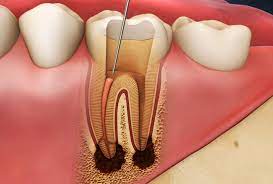An apicoectomy is a specialized surgical procedure performed when the dental infection spreads beyond your root apex. The root tip, known as the apex, is the area through which the nerves and blood vessels enter the tooth structure to provide nutrition to the crown.
Dental practice in Manassas, VA, offers apicoectomy through experienced and skilled dental specialists with utmost precision, offering infection and pain relief.
What is apicoectomy?
Apicoectomy, also known as root end surgery, is a minor surgical procedure that involves the removal of the infected root tip and preparation of a root end cavity that is filled with a biocompatible material. This procedure helps to curb the infection and prevent its spread to other teeth by sealing the apex.
Why is it needed?
When the tooth infection or inflammation persists even after a root canal treatment, an apicoectomy may be required. The purpose of an apicoectomy is the elimination of any residual infection and the ultimate preservation of the function of the affected tooth.
You may need an apicoectomy for the following purposes:
- Small adjoining root branches
- Presence of tiny, tortuous branches that cannot be sealed by root canal treatment.
- Blocked root canals
- Blocked root canals due to broken or fractured RCT file
- Narrow or curved canals
- Poorly shaped root canals cannot facilitate proper preparation of the canals, and the endodontic files cannot reach the root tip.
How is apicoectomy performed?
An apicoectomy is an outpatient procedure performed under local anesthesia (a numbing agent).
Pre-procedure:
- Your dentist will initially evaluate your affected tooth and take dental X-rays to plan the apicoectomy. You will be prescribed antibiotics or anti-inflammatory medications to treat the underlying infection before you are scheduled for surgery.
Procedure:
- Your dentist will make a small cut (incision) in the gum near the affected tooth.
- The root will be exposed by lifting the gum flap.
- A tiny fraction of the jawbone may be removed for clear access to the tooth root.
- The edge of the root tip and infected tissue will be removed with special ultrasonic instruments.
- The root will be sealed with filling material, and the dentist will close the gum incision through sutures.
- Your dentist will instruct you about all the necessary precautions and pain medications will be provided.
- Your sutures will be removed after about 7 to 10 days.
- It may take several months for the tissues to heal completely.
If you experience any pain or discomfort even after an RCT, it is advisable to consult your dentist immediately for further evaluation. They may recommend apicoectomy to prevent further damage and discomfort.









